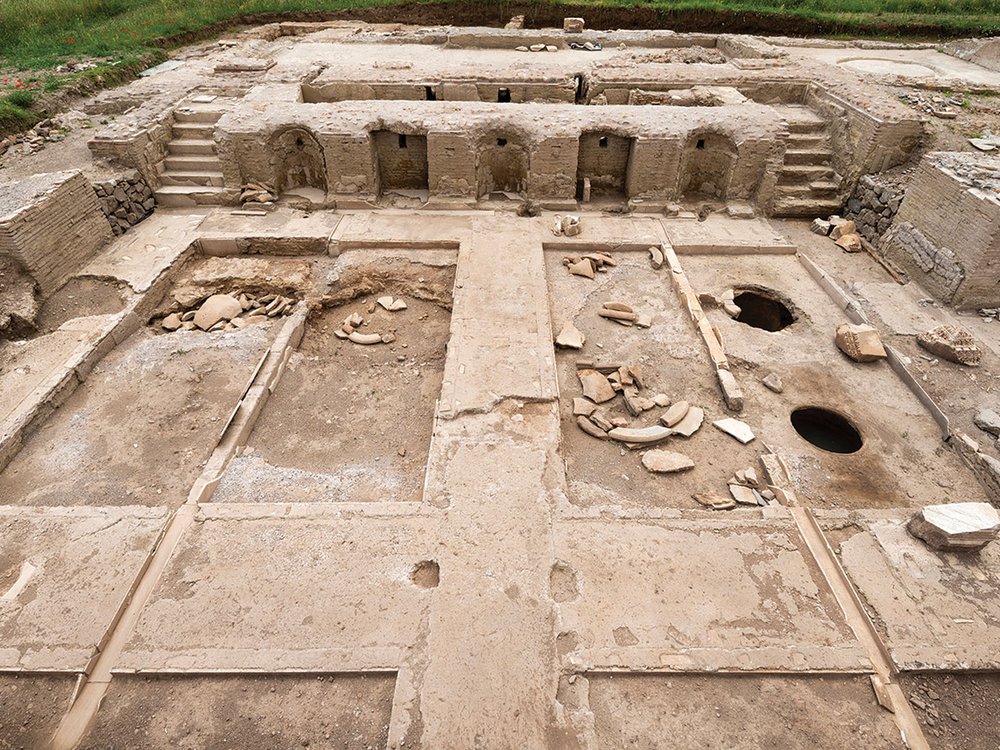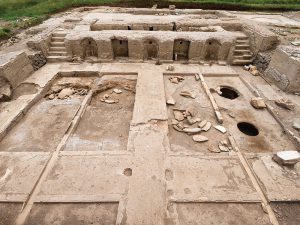
Remains of a Roman Winery discovered. Courtesy: Smithsonian

Remains of a Roman Winery discovered. Courtesy: Smithsonian
Posted: Sunday, 30 April 2023 11:52

“The Spectacle of Production: A Roman Imperial Winery at the Villa of the Quintilii, Rome” a Research Paper by an archaeologist, Dr Emlyn Dodd who is also an expert on ancient wine production, offers new insight into an exceptionally royal Roman winemaking complex dating to the 3rd century A.D.
Discovered during excavations at the Quintilii Villa, the winery contained an elaborately decorated grape-treading area, wine presses and cellar for storage and fermentation, according to a research published in the journal Antiquity recently.
Quintilii Villa, situated next to the Ancient Appian Road in the South of Rome, was once home to a theatre, an arena for chariot races with a bath complex and walls and floors lined in marble and a winery where the Roman elite gathered annually for viewing the theatre of winemaking. The complex also included a series of luxurious dining rooms having a view of fountains flowing with wine. It was located just beyond the city limits allowing the affluent Romans a world of the elite.
The Villa was likely built by the Quintilii brothers who served as consuls of Rome in 151AD but were later killed by Emperor Commodus around 181AD. It is also speculated that the imperial rulers took personal ownership of the complex and expanded it for centuries.
Wine and agriculture held great importance to the nobility’s wealth and power, according to Dodd. “They owned vast amounts of land dedicated to viniculture, winemaking, and used to sell it all across the Mediterranean,” he says. The winery had a functional facility for treading grapes where men would tread grapes with their bare feet in a rectangular area, a practice still prevalent in some wineries in Spain and Portugal.

Perhaps the most extravagant feature was three fountains that once flowed with freshly pressed wine. After streaming out from openings in an elegantly tiled facade, the wine snaked its way through open-air marble channels to giant storage jars, where it was fermented. Nearby, there were a series of dining rooms, one of which has only been excavated so far.
Researchers believe the winery was built primarily as a display of wealth because unlike several nearby regions, Rome wasn’t an especially well-known region for its wine. The villa may have been a place for rituals celebrating the beginning of the grape harvest, the study authors say.
In ancient Rome, wine was a source of great wealth for the elite, who dedicated large parcels of land to cultivate grapes and sold their product across the Mediterranean, Dodd tells NBC News. “But at the same time,” he adds, “wine permeates the whole culture and society—it’s used in religion, medicine, in daily life.”
Subhash Arora
